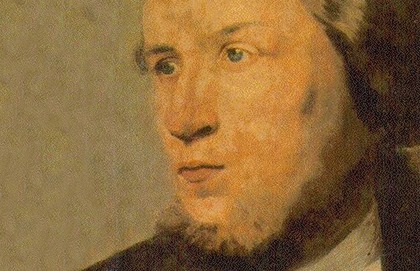Innovation can be very, very difficult. Are we turning enough to the deep well of human history? History has many social and cultural lessons to teach, and they may be more applicable to social innovation than we think.
For instance, Newton's Principia may not help you build a faster processor, but the story of Hans Neilson Hauge (cf. Cam Harder) can help you gain vital perspective on your difficult social innovation labours.
Hauge faced daunting challenges. As a farmer, much of his world was determined by what he could not control. Powerful economic and political forces threatened to take his land and the land of his neighbours. Changing weather patterns decreased yields, loans went unpaid, and the powerful took over land holdings when desperate farmers defaulted.
But entrepreneurial abilities can instill hope in people. Hauge could invent, build, design, and bring to scale the many ideas he had turned into reality including being a carpenter, metal-worker, broom-maker, bee keeper, grain farmer, and book binder. As his financial success led him to travel more widely, he saw the plight of many, many others who had come from farms like his. He passed along the benefits of his inventive labours to others, enabling many to gain their own economic footing amid changing conditions and new and growing communities of practice.
The most interesting part of the story of Hans Neilson Hauge was that he was born in Norway in 1771, some distance in time and place from the MaRS Discovery District or the Centre for Social Innovation in Toronto. He died in 1824 after having suffered many years in prison for offending the powers of the day, who were less enthused with his strategies of local empowerment. He had a significant hand in moving democracy forward in Norway despite dying before that was fully realized.
Historical attention doesn't mean we need to stop stretching forward. Neither are our efforts to devise new arrangements of business, services, or people are only retrospective. The work of weaving economic, social, and cultural change is a steep climb on a long road. Taking some time to explore history need not be prelude to a historical swoon, a posture of the desperate who want to escape present challenges. We learn about history to understand the dynamics of opposition, opportunity, and timing in present settings. It would be folly indeed to forego every assistance under the crushing load of expectations, funding, and uncertainty that weigh down social entrepreneurs.
The stories of those who preceded us can inspire and encourage us, tempering the twin hazards of foolhardy self-confidence and thumb-sucking despair. Does it help us in our work to consider that we may not live to see the full flowering of what we are working on? Hans Neilson Hauge was not privy to the greater waves that his proverbial stone in a pond led to.
For another example on social innovation in our past, consider social banking. Concerned about crippling interest levels, Dominican and Franciscan monastic orders established banking enterprises that were not driven by high profits. The design of these financial arrangements was such that interests rates were kept low in order not to exploit people. These banks "were not an example of an ethical business because they distributed gains, but because they conducted banking without usury" (Social Banks and the Future of Sustainable Finance, Weber and Remer). They would fit in today with the spirit of social finance entrepreneurs. Many of these social banks began in the early 1400s in Italy.
Finally, a social capital proponent named L. J. Hanifan argued that in using the term capital, he was not referring to "real estate, or to personal property or to cold cash, but rather to that in life which tends to make these tangible substances count for most in the daily lives of a people, namely, goodwill, fellowship, mutual sympathy and social [exchange] among a group of individuals and families who make up a social unit" (The Rural School Community Center). Hanifan argued that bringing social resources together would offer significant benefits to a whole community, and further that institutions like a school could provide such a context for that kind of connecting. He published his paper in 1916 and carried out significant community development work in West Virginia, inspiring many others to do the same.
If we forget the past, it may, in some cases, give us room to try new combinations of ideas that we might not have considered if we only paid homage to the past. However, it is often the case that the stories of those who preceded us, whether recent or off in the distant grey horizon of the long past, can serve as a welcome source of encouragement, support, motivation, inspiration, and deep insight. We must by all means stretch forward, while at the same time keeping a hand on the various books of history that can serve us yet, even if we work on the leading edge of social innovation.






